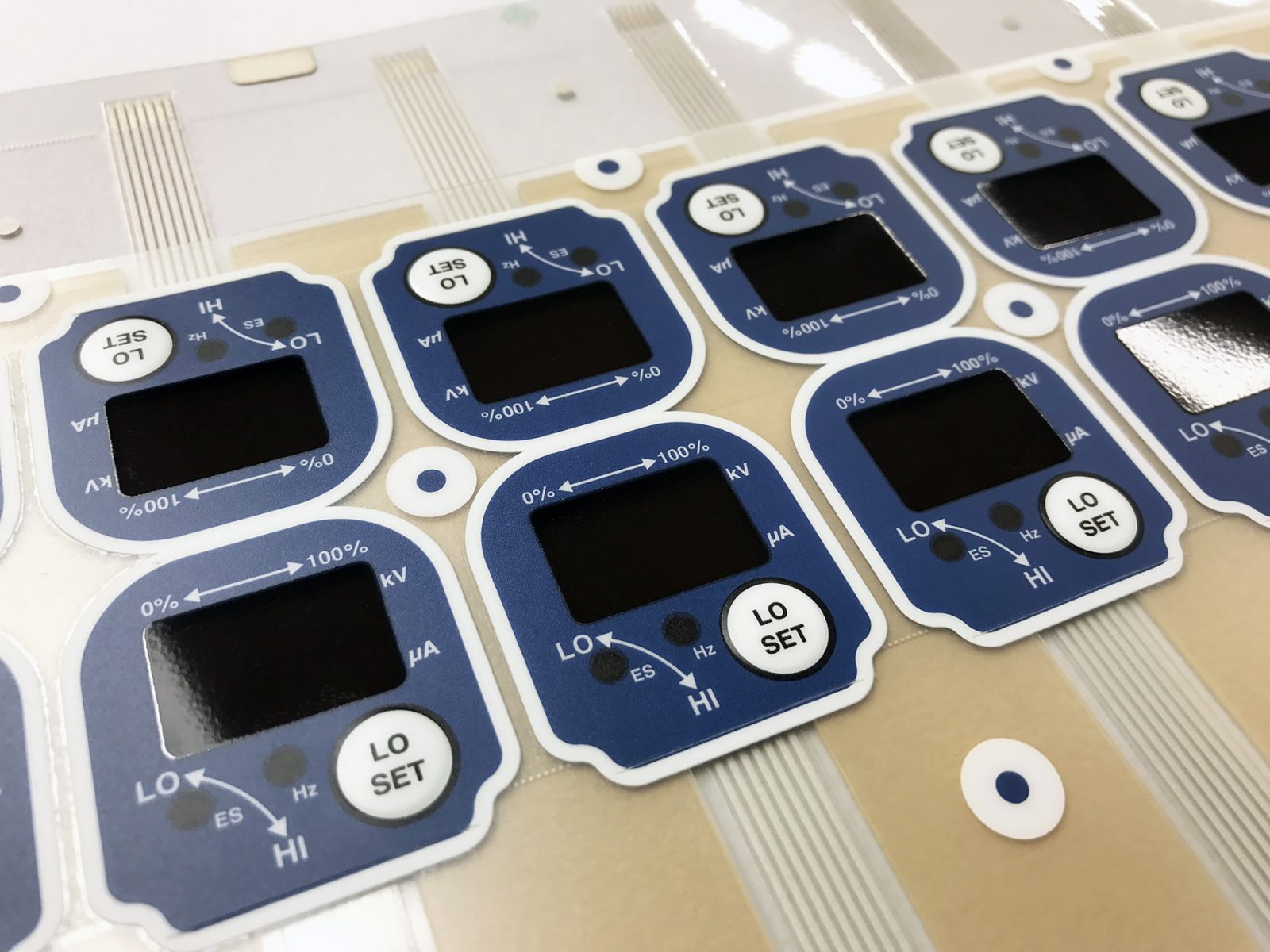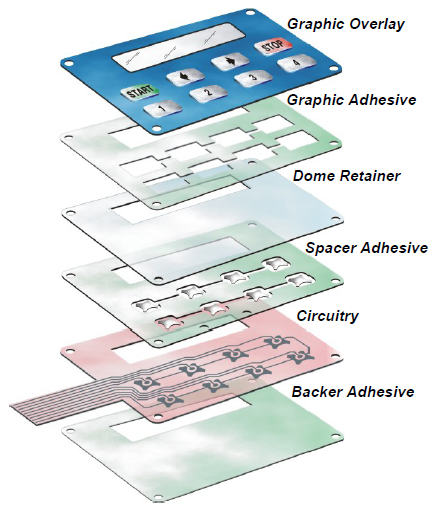How to Pick the Right Membrane Switch for Your Electronics Project
How to Pick the Right Membrane Switch for Your Electronics Project
Blog Article
Membrane Switch Over Innovation: The Trick to Trustworthy and Cost-Effective Interfaces
Membrane layer button modern technology has emerged as a crucial component in the design of interface, offering both integrity and cost-effectiveness throughout a varied variety of applications. Its robust building makes sure resistance to ecological obstacles, while the flexibility in design allows for tailored services that fulfill certain market demands. As we explore the multifaceted advantages of membrane buttons, their possibility for advancement questions about future applications and evolving trends. What does the next chapter hold for this innovation in a significantly electronic landscape?
Comprehending Membrane Switch Over Innovation
Membrane switch innovation is a widely used user interface solution in numerous electronic gadgets, providing a smooth mix of performance and design. This modern technology integrates several layers of materials, typically including a visuals overlay, spacer layer, and a circuit layer. The graphic overlay displays the user interface aspects, while the spacer layer separates the circuit layer from the overlay up until a user triggers a switch.
When stress is applied to the overlay, the circuit layer finishes the electric circuit, sending a signal to the tool. This system permits various arrangements, including responsive comments and backlighting options, boosting individual communication. Membrane buttons are generally made utilizing resilient products such as polyester or polycarbonate, making sure durability and resistance to ecological aspects like wetness and dust.
The convenience of membrane layer switches over allows their application in diverse markets, consisting of medical tools, customer electronic devices, and commercial controls. Their compact style enables combination into space-constrained atmospheres, giving an effective individual interface without compromising aesthetic allure. Understanding the ins and outs of membrane switch modern technology is necessary for manufacturers and designers seeking to develop dependable and efficient human-machine user interfaces.
Key Benefits of Membrane Layer Buttons
While various interface remedies exist, membrane changes deal distinct advantages that make them a favored selection in numerous applications. One of the main advantages is their resilience; membrane layer switches are developed to stand up to rough environmental conditions, including dampness, dirt, and temperature fluctuations, making certain long-lasting efficiency. This strength considerably minimizes the demand for constant substitutes, thereby lowering overall upkeep prices.

Furthermore, membrane layer buttons are lightweight and compact, making them suitable for applications where room is limited. Their inconspicuous style adds to a smooth appearance without compromising capability.
Cost-effectiveness is likewise a significant advantage, as the manufacturing procedure for membrane switches often tends to be less costly contrasted to standard mechanical buttons. This cost, combined with their integrity and simplicity of installation, placements membrane layer switches over as a useful solution for a large range of industries looking for efficient and reliable interface.
Applications Across Numerous Industries
Exactly how do membrane layer buttons adjust to the diverse requirements of various sectors? Membrane button technology is progressively identified for its content versatility, making it ideal for a large array of applications across several fields.
In customer electronics, membrane switches give a compact service for push-button controls and home devices, boosting user experience through user-friendly layout. Additionally, the industrial market leverages membrane layer buttons for equipment control panels, gaining from their resistance to severe atmospheres, such as dampness click for info and dirt.
Armed forces and aerospace applications likewise use membrane layer buttons for their integrity and capability to stand up to severe problems, ensuring operational efficiency in crucial situations. The food and beverage sector adopts these buttons for automated systems, where cleanliness and simplicity of operation are critical (membrane switch). Ultimately, membrane switches are customized to fulfill the one-of-a-kind needs of each market, verifying their necessary function in contemporary technology interfaces
Design and Customization Choices

In the world of membrane layer button modern technology, design and modification options play an essential role in boosting performance and individual interaction. These buttons can be customized to meet specific functional requirements and visual choices, making them versatile parts in different applications.
Among the primary modification choices is the layout of the button itself, which can be developed to suit distinct interface and ergonomic considerations. By readjusting the shape, dimension, and arrangement of switches, manufacturers can produce intuitive layouts that help with convenience of use. In addition, the consolidation of various colors and graphic overlays allows for branding and improved presence, guaranteeing that customers can rapidly recognize functions.
Additionally, membrane layer buttons can be engineered with numerous tactile responses mechanisms, such as increased buttons or distinct clicks, to boost the individual experience. Various materials can likewise be picked for sturdiness and ecological resistance, attending to elements such as wetness, temperature variations, and chemical exposure.
Inevitably, the substantial layout and personalization alternatives available in membrane layer switch technology equip organizations to create tailored options that not only fulfill functional requirements however additionally straighten with their branding and operational needs.

Future Patterns in Membrane Buttons
As membrane switch modern technology continues to develop, future patterns are significantly focused on boosting user experience and incorporating sophisticated performances. One considerable fad is the integration of touch-sensitive and capacitive modern technologies into standard membrane layer buttons. This growth enables more intuitive user interfaces, offering tactile comments while keeping a streamlined layout.
An additional arising fad is using environmentally friendly products, driven by the growing demand for sustainable production techniques. Makers are looking for to minimize their carbon impact by using recyclable substratums and low-impact inks, lining look at more info up with worldwide sustainability goals.
Additionally, the increase of the Internet of Points (IoT) is motivating the incorporation of smart features right into membrane layer buttons. Improved connectivity options will certainly allow devices to connect with each other, enabling smooth assimilation right into more comprehensive systems.
In addition, advancements in printing technologies, such as electronic printing, are enabling higher design flexibility and modification. This makes it possible for producers to produce intricate layouts and lively colors cost-effectively.

Final Thought
In final thought, membrane button technology stands for a vital technology in individual interface layout, providing substantial benefits in resilience, modification, and cost-effectiveness. As developments proceed to emerge, especially in touch-sensitive user interfaces and sustainable products, the potential for membrane layer changes to boost individual experience and capability remains appealing.
Report this page